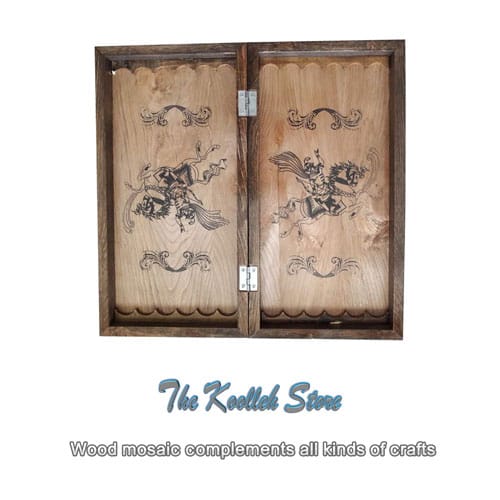Wood mosaic complements all kinds of crafts

Iranian handicrafts have many features and diversity with unique features. Each of these beautiful and old products dazzles the eyes of tourists.
The use of mosaic art is one of the traditional Iranian artistic methods that adds to the special charm of Iranian handicrafts. At present, in addition to making murals, the art of mosaic work is used to decorate the table top, the back of chairs, the recitation of the Quran, spoons and forks, wooden services and doors of the tombs of the Imams, residential houses, etc. This art, organized in Iran, has a history of nearly 70 years, and during different periods of social life, along with advanced conditions, it has been able to harmonize itself with new artistic products.
The mosaic in the word basically says everything streaked; But its specific concept is to create beautiful patterns and designs that are formed by discarding and combining colored wood on a background of wood or black polyester. As mentioned, this art has been organized for only 70 years; But no further details are available. Considering the adaptation of this art to tiling, it can be claimed that mosaic work is somewhat similar to tiling.
The similarity between mosaic tiles and wood mosaics is in the method of operation, which in both cases the roles are formed by combining the colored parts of the desired material. One of the oldest examples of these two arts is the old and large door belonging to the Qajar era, which is located on the northwest side of the current education area.
This art was originally used to decorate the table, buffet, door and seat backrest, and only Islamic or knot patterns with 5 limited colors of ebony, foil, pear, elm and berry wood were used. The method of Iranian mosaic work is adapted from the Indian method. In the past, artists used scissors or cavers to place the patterns on the object according to their design, and then painted the patterns out of colored wood with a drill dedicated to repairing porcelain and old scraps. And they carried a saw called a check and put it in its proper place. After creating very thin saws, the mosaic on the wood entered a new stage and the art became elegant and amazing. At this stage, instead of carving on wood and placing the desired patterns in it, by creating different pieces such as oysters, ivory, bone, metal and different colored woods, mosaics are created next to each other. In fact, wood mosaic can be considered as a painting in which different colored woods are used instead of paint and hair saws are used instead of brushes. This valuable art is now more common in Tehran, West Azerbaijan, Sistan and Baluchestan, Qazvin and Kurdistan.

